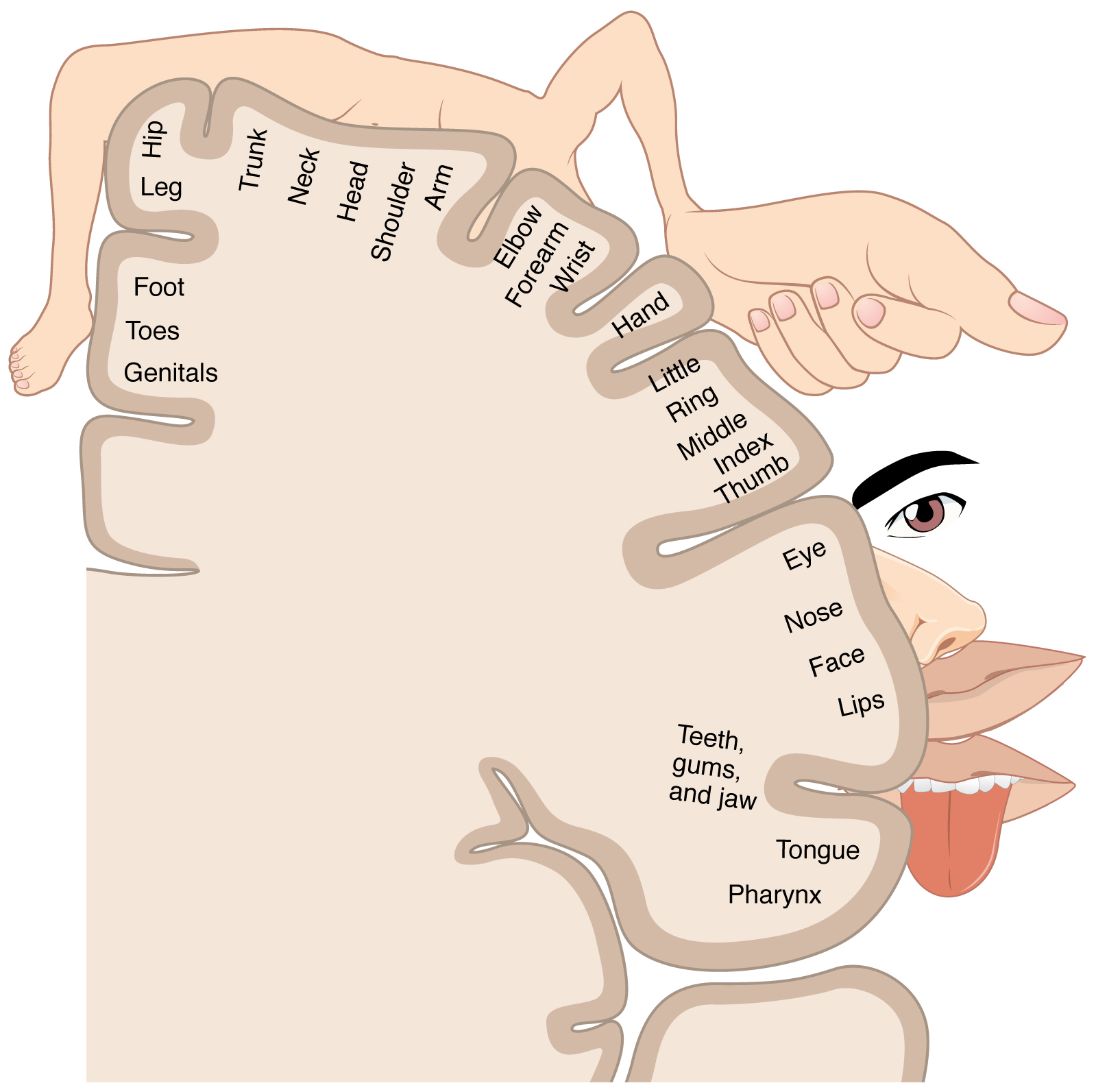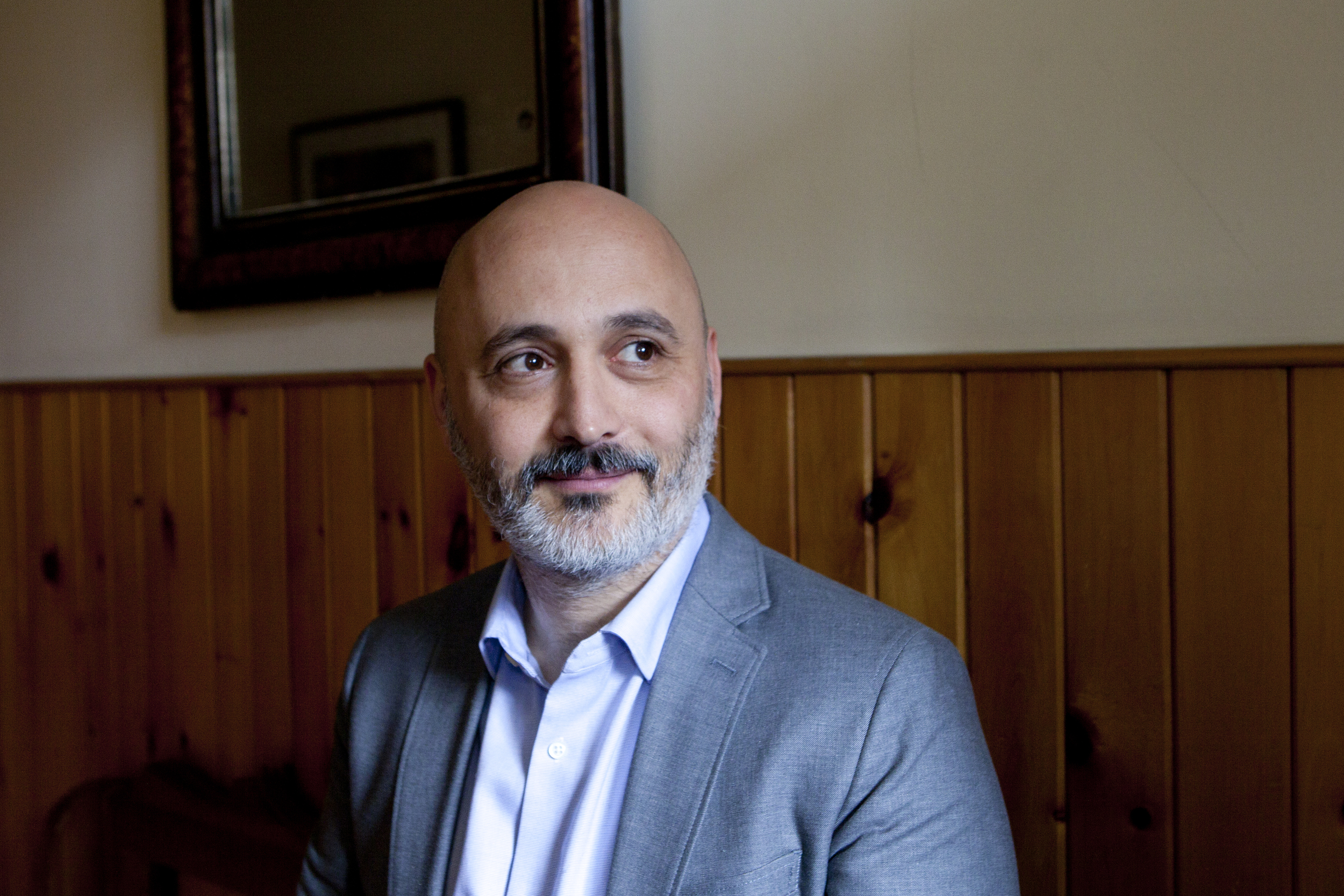Understanding the True Appearance of Dystonia is the First Step in Starting the Rehabilitation.
Dystonia is the state of over-sensitive response of the nervous system. Such a state causes a deficit in the regulation of the two hemispheres of the brain, which leads to deficits in cognition, movement, sensation, emotion and perception. Dystonia is not only a problem of movement control, but also affects sensations and emotions, that is, in addition to physical symptoms, the state of the brain can also cause corresponding symptoms.
For example, some players with dystonia found out that when they put on gloves, their movements improved significantly. Our body map is presented in the main somatosensory cortex of the brain, and the nervous system will recognize our body parts based on it. Once the nerve impulses that innervate these areas are not properly processed, certain parts of the body will disappear from the somatotopic map of the brain. As long as the brain can’t feel it, or the signal of sensation is too weak, it can’t control the movement. Wearing gloves is like to make the nervous system feel the hand and its surrounding environment again. Only by “feeling it”, the nervous system can be integrated with other brain motor programs, and then control the movements.
There is a connection between the movements and emotions of patients with dystonia. There is a dynamic connection between the two. No matter which path is opened, the other will also be opened. This phenomenon is most obvious in musician’s dystonia. Players cannot perform certain movements on the instrument, but they can perform the same movements in the air without hindrance. This phenomenon has long been regarded as a psychological problem. Due to unknown reason, it is explained in a simplified way. In fact, the connection between movements and emotions is very complicated. Emotions can indeed improve movements. On the contrary, movements can also improve emotions, but such connections have always been ignored. Once the movement returns to normal, the emotion can be calmed again and the brain can resume to its normal function.
The reality of dystonia is far more complicated than previously recognized. It is not just a simple movement disorder or a disease caused by emotions, but a complex brain state. In treatment, no matter which part is improved between movement, sensation, and emotion, it will affect other parts. When the movement improves, the emotion will be calmer; the sensation improves, the movement can be performed better; the emotion improves, the movement is no longer rigid. Therefore, the treatment should be carried out in many ways. It is not suitable to treat all patients with a single method. Successful rehabilitation needs to be designed according to the individual.
The Parts Affected by Dystonia:
The parts affected by dystonia are not only the movement, but also the reception of sensations and the changes in emotions, which affect each other.
Movement
Changes in movement are the most obvious sign of dystonia and the most easily noticeable part. Once the movements cannot be executed as usual, it will immediately trigger an emotional response.
Sensation
In addition to movement problems, patients with dystonia usually have deficits in proprioception, stereognosis, and spatial cognition, which are all related to hypofunction of the right hemisphere.
Emotion
Patients with dystonia are often trapped by their own body’s sensations, thus isolating themselves. Anxiety, depression, inability to concentrate or obsessive thinking are common symptoms.

Somatotopic Map

Dr. Joaquin Farias
Dr. Farias is an authority on the treatment of dystonia and a pioneer in advocating the treatment of dystonia with movements. His outstanding insight has opened a new milestone for the neuroplasticity process of motor training. Since 1996, Dr. Farias has helped more than 3,000 people find their lives; these people have been affected by dystonia, tremor and other coordination problems. His books include: Limitless. How your movements can heal your brain. An essay on the neurodynamics of dystonia; Intertwined. How to induce neuroplasticity. A new approach to treating dystonias; Rebellion of the body. Understanding Musicians Focal Dystonia.
The Farias Technique
The Farias Technique is a movement training based on neuroplasticity. It is a non-invasive and effective treatment. Although the Farias Technique is centered on movement training, it is not a general physical therapy. It is based on neuroscience knowledge and is designed according to the individual movements of the patient. Such training is not a theoretical treatment method, but is accumulated from Dr. Farias’ practical experiences of treating patients. The most significant difference between this training method and other treatments lie in the theory of dystonia and its core concept.
Dr. Farias called the technique he created an art of “remembering”. He believes that the brain of patients with dystonia is trapped in the wrong circuit of movement. In order to interrupt such a circuit, it must restore the memory of proper movements that was previously used, and stimulate the regeneration of functional neural circuits through movements.
Let’s take musician’s dystonia as an example. Most of the treatments emphasize that the player needs to “relearn” the movements of playing. However, Dr. Farias believes that the memory of proper movements that was previously used has never disappeared, but has been replaced by another strong movement circuit. This phenomenon is caused by the temporary loss of normal functions of the brain. Therefore, the main goal of the Farias Technique is to restore cognitive, perceptual, emotional and motor functions by neuroplasticity training, so that the proper movements that were previously used can be reproduced.
Movement Training
In the treatment of musician’s dystonia, movement training is an indispensable and primary part of the rehabilitation process. Some players can recover their performance ability after undergoing neuroplasticity training; some players need to combine other treatments together. Since the performance itself is a highly coordinated fine movement, once the previous movement cannot be performed properly, the body will achieve the movement in a compensatory way. If the therapist does not have sufficient knowledge of dystonia and observation, or only uses general teaching methods as a guide, it will often make the patient’s condition worse.
Combined with Other Treatments
Judging from the extent and scope of the impact, most musician’s dystonia are relatively mild. It remains to be considered whether treatments that are invasive or that can only temporarily relieve symptoms are suitable. The primary goal of musician’s dystonia is to restore the ability to perform. In addition to the main movement training, many adjuvant therapies can also help patients restore their physical and mental balance. Improving the patient’s body consciousness is of great help for rehabilitation. In addition, healthcare community or psychological counseling can also help patients get out of the trauma of the rehabilitation process.
Other Treatments
In addition to the Farias Technique specifically designed for musician’s dystonia, the following are other treatments for reference.
Sensory Motor Returning
“ Sensory Motor Returning ” was proposed by Victor Candia, a German scholar, who used “Constrained-Induced” rehabilitation therapy for stroke patients to treat musician’s dystonia. This treatment uses splint to inhibit the muscle groups that should not be used and limit the fingers that produce compensatory movements.
Botox
Botox is a symptomatic therapy, it can only temporarily make the symptoms disappear or alleviate, after the effect of the drug subsides (three to four months), it must be administered again. The treatment is to inject botulinum to the muscles to combine with the numerous tiny nerve fiber endings in the muscles to inhibit the neurochemical transmitter Acetylcholine released by these nerve fiber endings, thereby achieving the effect of inhibiting muscle contraction.
Oral Medication
Currently, there is no oral medication specifically for dystonia. Neurologists usually use medications for other motor disorders to patients, but the results are not good. Common drugs include:
- 抗乙醯膽鹼類藥物(Anticholinergic drugs):Trihexyphenidyl(Artane)
- 多巴胺類藥物(Dopaminergic drugs): Levodopa
- 氨基丁酸類藥物(GABAergic drugs): Baclofen
Brain Surgery
At present, brain surgery for the treatment of musician’s dystonia is divided into the following two categories: 1. Destructive surgery, in which “Thalamotomy” is performed in a stereotactic manner. 2. Deep Brain Stimulation (DBS), in which electrodes are placed in specific locations in the brain, and electrical stimulation from the brain rhythm device is used to regulate abnormal brain activity messages, thereby controlling motor symptoms and achieving the purpose of the treatment.
Adjuvant Therapies
The use of adjuvant therapies are very important parts of the treatment of musician’s dystonia. The reason why it is called “adjuvant” is not because of its efficacy, but because these therapies are not specifically designed for musician’s dystonia.

The Dilemma of Treatment
The presentation of dystonia is inherently highly diversified. When it occurs to musicians, its presentation will change in conjunction with the individual performance of the instrument, thus forming a special classification. In terms of treatment, since most of the treatments are not specifically designed for musicians, it is often difficult for a therapist without a professional background in music to persuade the player to change his movement. In addition, the training process of the musician is based on hard practice. When professional players encounter dystonia, most of them think that they can do it on their own, but this idea leads to a treatment dilemma.
Most players think that this is just a movement problem. Even if they know the complexity of dystonia, they still believe that it is a technical problem, and they can resume playing by changing the technique. Moreover, the recovery process of dystonia is different from learning new things. The learning curve of new things continues to rise. There is no improper default. However, the recovery process of dystonia has to bypass the improper pathways. Roughly speaking, the learning curve is fluctuating and slowly rising. Musicians often find it difficult to accept a decline in the learning curve. Once they feel regressed, they are easily frustrated and it is difficult to keep practicing.
For musicians with dystonia, psychological adjustment is the most difficult. Because many patients are already professional players, being unable to play is like losing the ability to work, and it will also have a strong impact on self-worth. Seeking joint assistance from psychological counselors and professional therapists will help patients face the long and unknown road to rehabilitation.
